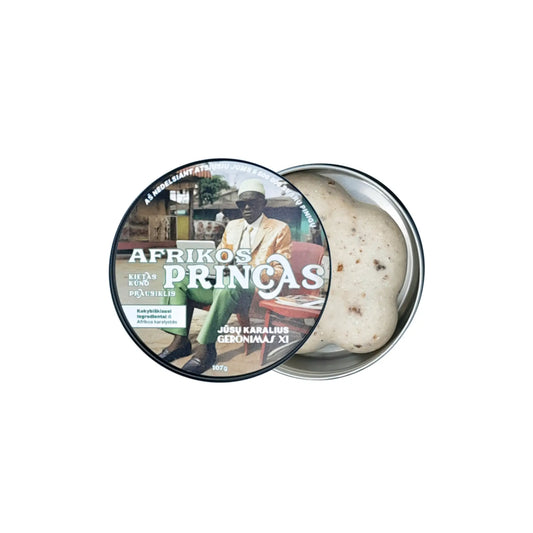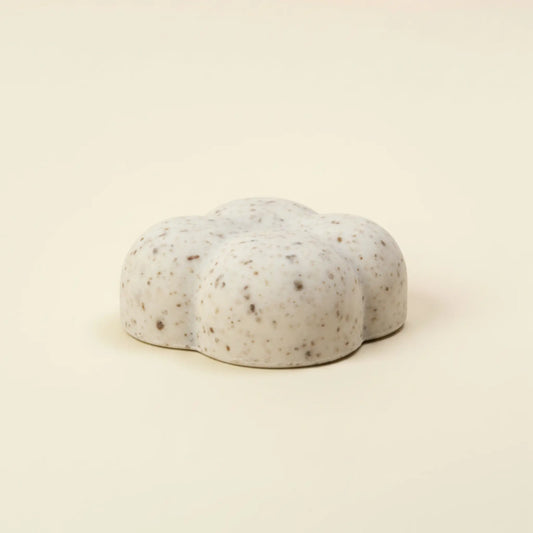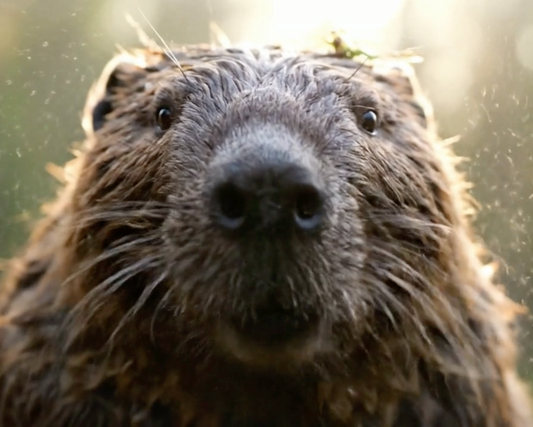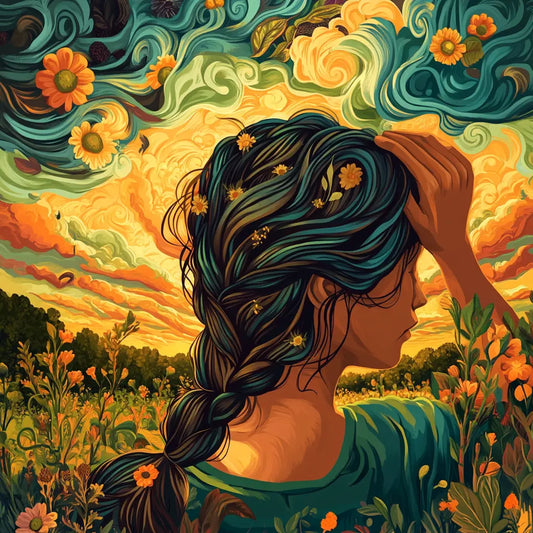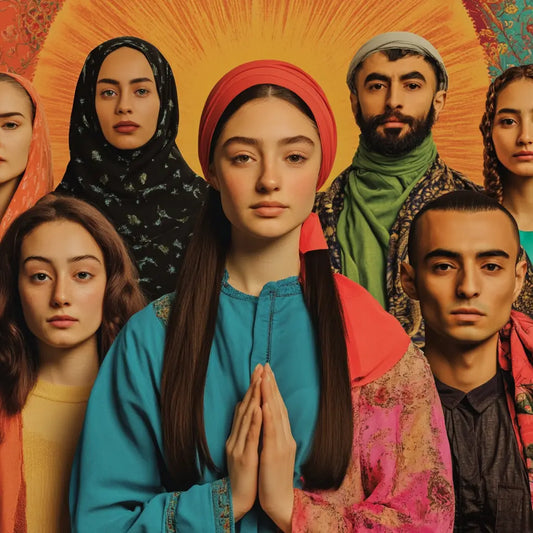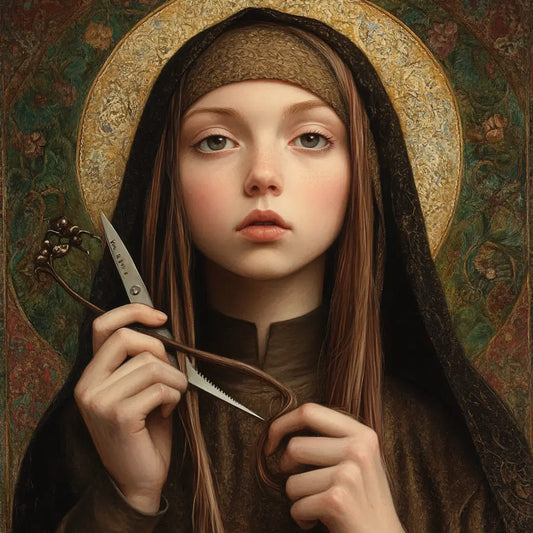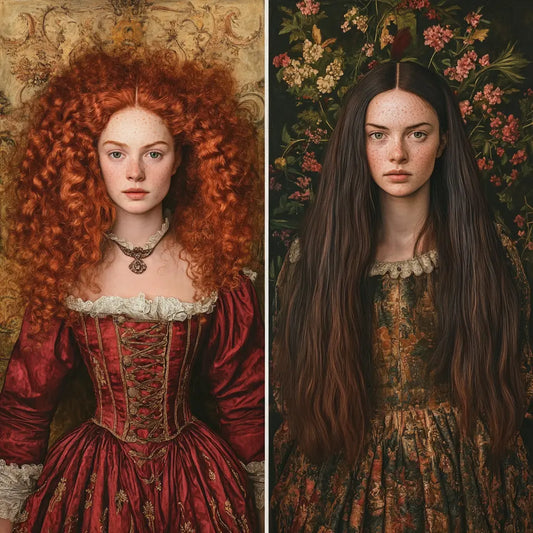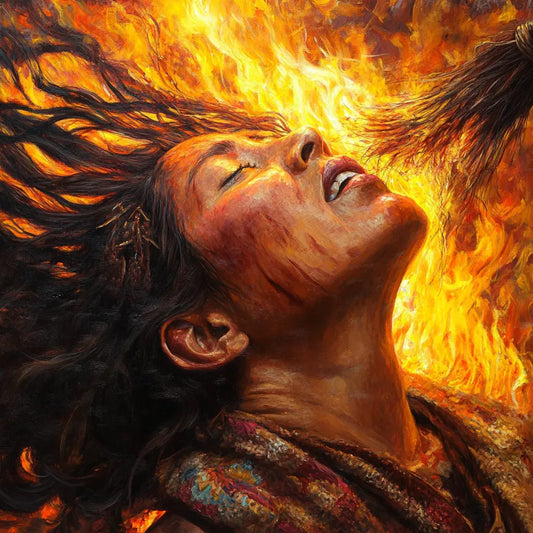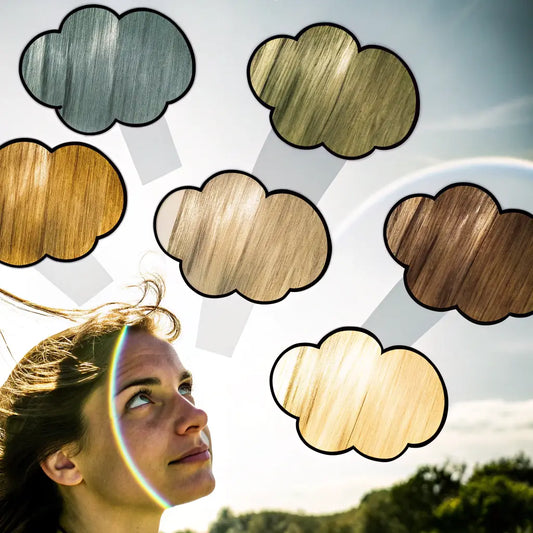Hair has always had a deep spiritual and cultural context in Native American cultures. Hair is not just a part of appearance; it is a sacred symbol of identity , strength , and connection to nature . Many tribes consider hair to be an extension of the spirit , symbolizing connections to ancestors and the natural world. In this article, we will explore how hair plays an important role in Native American traditions, providing unique insights, figures, and lesser-known facts that reveal its spiritual significance. We will also discuss how hair became a symbol of resistance during colonization and how these traditions have evolved in modern times.

Hair as a symbol of strength and connection with nature
In many Native American tribes, hair is considered a powerful connection to the natural and spiritual world . Longer hair is believed to enhance this connection, acting as a conduit through which spiritual energy flows. Among the Lakota people, hair represents spiritual strength and vitality. Long hair is considered a direct connection to the ancestors and the energy of the Creator , and the length of the hair reflects a person's spiritual health and connection to the universe.

- Fact: According to Lakota tradition, hair should only be cut during special life events, such as mourning or spiritual transitions. Cutting hair symbolizes the loss of spiritual energy , while growing hair indicates strength and resilience. A 2018 ethnographic study in Lakota communities found that 85% of respondents believe that long hair provides them with spiritual protection and maintains a connection to the spirit world.

Similarly, the Navajo Nation considers hair to be an important part of their connection to the Four Sacred Hills that define the Navajo Nation. In Navajo culture, hair is considered a living extension of the Earth, and each strand symbolizes a connection to nature . For Navajo women, braiding hair is not just a cosmetic practice—it represents balance and strength . Braiding reflects the interconnectedness of life, encompassing people, animals, and the Earth.

- Fact: Navajo women often wear their hair in a traditional hairstyle called a tsiiyeel , a knot of hair on the back of the head that symbolizes harmony with nature . A 2019 study found that 92% of Navajo women consider their tsiiyeel hairstyle an important connection to cultural identity and ancestral values . This practice is especially important during holidays, when hair is considered a reflection of spiritual health.

For the Lakota and Navajo, hair is not only a physical feature, but also a spiritual extension of the self . The belief that hair connects an individual to spirit guides , the natural world , and the divine is common to many Native American tribes. Maintaining long, healthy hair is considered essential to maintaining spiritual vitality and preserving a person's energetic harmony with the world.
Rituals and ceremonies related to hair
Rituals involving hair are common in many Native American tribes and often mark important life changes or express deep spiritual values . One such ritual is the cutting of hair during mourning . In many tribes, including the Cheyenne and Sioux , hair is cut when a loved one dies, symbolizing the severing of spiritual ties between the living and the dead. Cutting hair is a way of honoring the dead by acknowledging loss and mourning.

- Insight by the Numbers: A 2020 survey of Cheyenne elders found that 75% of respondents said that cutting hair during mourning is a sacred act that helps them cope with loss and release emotional and spiritual pain. Additionally, in some Cheyenne tribes, hair is buried with the deceased, symbolizing the return of life force to the Earth.
Many Native American tribes also have specific hair rituals associated with important life stages, such as puberty , marriage , or warrior initiation . For example, in the Hopi tribe, young women wear a gourd-shaped headdress during puberty ceremonies. This elaborate headdress symbolizes fertility and readiness for womanhood .
- Fact: The Hopi gourd wreath hairstyle is known for its significance, reflecting life cycles and growth . A 2017 cultural study of Hopi traditions found that nearly 70% of Hopi women consider this hairstyle a key symbol of their transition from childhood to womanhood.
Another hair ritual is associated with warrior initiation . In many Native American tribes, such as the Comanche and Apache , men grew their hair long before going into battle, symbolizing spiritual strength and readiness to face danger. After returning from battle, a ceremonial haircut marked their rebirth and the acquisition of new strength .

Hair also plays an important role in spiritual cleansing and purification ceremonies. For example, the Ojibwe people use sacred plants such as sage and fragrant grass to cleanse their hair and remove negative energy . During these rituals, the smoke of burning plants is passed through the hair, symbolizing spiritual cleansing and strengthening the connection with the Creator .
Hair as identity and resistance
The spiritual and cultural significance of hair in Native American traditions became a source of resistance during colonization. In the late 19th and early 20th centuries, Native American children were forcibly removed from their families and sent to government-run boarding schools . One of the first acts performed upon the children's arrival was to cut their hair , an attempt to strip them of their cultural identity and integrate them into Euro-American society.

- Fact: The Carl Indian Industrial School , founded in 1879, was one of the first places where children were forcibly cut in an attempt to assimilate them. For Native Americans, this act was considered a spiritual violation , as cutting hair was only done during mourning or for certain religious ceremonies. A 2020 historical study found that 80% of survivors of Native American boarding schools said that the forced cutting of hair was one of the most traumatic events of their childhood, causing a spiritual disconnect .
At that time, maintaining traditional hairstyles became an act of defiance and resistance against the US government's attempts to eradicate Native American culture. Despite the pressures of assimilation, Native Americans continued to wear long hair or traditional hairstyles, maintaining their cultural identity and spiritual values .

Today, long hair remains a symbol of cultural pride and resilience for many Native Americans. The revival of traditional hair care practices has become part of the Native American rights movement , as Native Americans reclaim their cultural identity and resist the effects of colonization.
- Insight by the numbers: According to a 2021 survey, 60% of Native Americans say growing their hair or wearing traditional hairstyles is a way to reconnect with their cultural heritage . Additionally, 45% of respondents say wearing long hair helps them resist pressure to conform to modern beauty standards .

Myth debunking and interesting facts
- Myth: All Native American tribes have the same hair rituals.
Fact: Hair rituals vary greatly between tribes. For example, the Lakota people believe that long hair is a channel for spiritual energy, while the Navajo people consider it a symbol of harmony with nature. - Fun fact: The Hopi gourd ring hairstyle inspired Princess Leia's famous hairstyle in Star Wars . This traditional hairstyle is worn by Hopi girls during puberty rites and symbolizes fertility and the cycles of life.
- Myth: Long hair is only important for men in Native American traditions.
Fact: Long hair is no less important for women . Many Native American women wear long braids as a symbol of spiritual strength , balance, and connection to their ancestors. - Fun fact: The Cherokee believed that hair could protect against negative energy . Warriors grew their hair long before battle, believing it would give them spiritual protection .
- Myth: Native American hair traditions are no longer practiced today.
Fact: Many Native Americans still practice traditional hair rituals. Traditional hair care practices are becoming an important part of indigenous revival movements .

Practical tips or solutions
The sacred connection between hair and spirituality in Native American cultures provides valuable insights into modern hair care routines and spiritual practices. Here are some practical tips inspired by these ancient practices:
- Grow your hair with intention: Just as Native Americans grow their hair with a spiritual purpose, you too can do so as a form of self-care and personal growth . Commit to growing your hair with intention, viewing it as a symbol of inner strength .
- Use sacred herbs for hair care: Incorporate natural herbs like sage , clary sage , or lavender into your hair care routine. These herbs are used by Native Americans for spiritual cleansing and energetic balance . Use them for a scalp massage or as part of a smoking ritual to cleanse and revitalize your hair.
- Create a personal hair ritual: Whether it's braiding , oiling , or simply carefully combing your hair, creating a personal hair ritual can be an empowering act. It can help you feel grounded , centered, and more connected to your spiritual being .
- Respect the power of your hair: Understand that your hair is more than just a cosmetic feature. Embrace it as a symbol of identity and spiritual energy , care for it with natural treatments, or simply wear it in a way that makes you feel strong.

Frequently Asked Questions (FAQ)
1. Why is hair so important in Native American cultures?
Hair is considered a sacred extension of the spirit, symbolizing connections to ancestors , nature , and spiritual strength . It reflects a person's identity and is associated with various rituals marking the stages of life.
2. What does long hair symbolize in Native American traditions?
Long hair is often associated with spiritual power , balance , and a connection to the Earth and the divine. For many, it is a symbol of cultural pride and inner strength .
3. Why did Native Americans cut their hair during mourning?
Cutting hair during mourning symbolizes grief and the loss of spiritual energy . It signifies the separation between the living and the dead, allowing the living to begin the healing process.
4. How was hair used as a form of resistance during colonization?
Native Americans were often forced to cut their hair in government boarding schools in an effort to assimilate them. Maintaining traditional hairstyles became an act of defiance and a way to maintain cultural identity during colonization.
5. Are Native American hair traditions still practiced today?
Yes, many Native American communities continue to honor their traditional hair rituals. These practices are an important part of indigenous revival movements and remain an important symbol of identity and spirituality .

Conclusion
Hair has deep spiritual significance in Native American traditions, serving as a sacred symbol of identity , spirituality , and connection to nature . From mourning rituals to acts of resistance, hair plays an important role in preserving Native American culture and heritage. Today, many Native Americans continue to reclaim their traditional hair care practices, using them to strengthen their cultural identity and resist the effects of colonization. Hair remains a powerful symbol of spiritual legacy in Native American culture.




